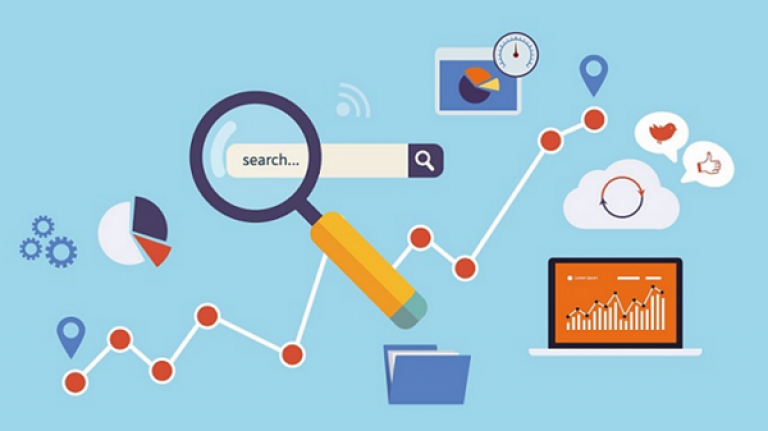In today’s fast-paced digital marketplace, competitive price monitoring has become more critical than ever. The ability to keep an eye on rival pricing strategies and adjust your own costs accordingly can make or break a brand’s success. If you’re still treating price comparisons as an afterthought, you might be missing out on opportunities to boost your business, capture market share, and enhance customer satisfaction. Let’s take a closer look at the benefits, best practices, and top tools to ensure you stay on top of the game.
Why Competitive Price Monitoring Matters
- Real-Time Market Insights
No business operates in a vacuum. Rather than guessing what your competitors are charging, price monitoring tools can give you instant visibility into real-time market data. Armed with accurate numbers, you can adjust prices on the fly and maintain a competitive edge—whether you’re running an e-commerce store or a brick-and-mortar shop. - Enhanced Profit Margins
Knowing what your competitors are up to helps you find the sweet spot between affordability and profitability. You’ll avoid setting prices too high (chasing customers away) or too low (leaving money on the table). A well-informed approach means your profit margins stay robust and sustainable. - Improved Customer Perception
Have you ever browsed a product online, only to discover it’s listed elsewhere for a fraction of the cost? It doesn’t leave a great impression, does it? Monitoring competitor pricing ensures your rates remain in line with market expectations, which builds trust and loyalty among your audience. People like consistency and fairness, and staying aware of competitor prices helps create exactly that perception. - Adaptive Strategy Development
Price monitoring is more than just a quick fix; it’s an opportunity to craft dynamic, long-term strategies. By analyzing trends and competitor price movements, you can optimize product lineups, adjust marketing campaigns, and even make smarter inventory decisions. It’s all about being agile in a highly competitive environment.
Key Components of a Successful Price Monitoring Strategy
- Set Clear Objectives
Before diving into price tracking, clarify your goals. Do you want to offer the cheapest options in your niche, or are you aiming for a premium position? Understand what drives your target audience and tailor your pricing objectives to align with those insights. - Identify Relevant Competitors
Not all competitors are created equal. Focus on brands that mirror your product quality, target demographic, and price range. Tracking the wrong set of competitors could lead to misleading data and misguided decisions. - Leverage the Right Tools
While manual price checks are doable in the early stages of a business, they’re far too labor-intensive as you grow. Nowadays, you’ll find a variety of software tools designed to automate data gathering and make sense of large volumes of price data. Whether you choose a specialized platform or a general analytics solution, ensure it offers real-time updates, insightful dashboards, and data export capabilities. - Stay Compliant
Keep in mind that there’s a fine line between competitive price monitoring and anti-competitive practices. Familiarize yourself with relevant laws and regulations to avoid potential legal pitfalls. If you’re uncertain, consult legal experts to ensure you remain on the right side of the law. - Iterate and Refine
Treat your price monitoring strategy as a living, breathing process. Periodically reassess your methods, experiment with new tools, and adapt to market changes. Staying flexible is often the key to success in a fluctuating market landscape.
Practical Tips for Getting Started
- Automate Everything You Can
Automation isn’t just a buzzword—it’s a necessity. Automated price monitoring tools can notify you the moment a competitor changes their pricing, saving you from endless manual checks. Plus, you can program alerts to help you respond quickly to market changes. - Benchmark Your Own Products
Don’t just rely on competitor data; compare your own product lines. Sometimes, differences in features or quality may justify a higher price point. Be honest about your offering’s value proposition and ensure your pricing reflects it. - Combine Data with Broader Market Analysis
While competitor pricing is crucial, it’s just one piece of the puzzle. Complement your price monitoring efforts with customer feedback, product reviews, and broader market trends. A holistic approach provides deeper insights for more informed decisions. - Mind the Timing
Some industries experience frequent price shifts based on seasonality or promotions. If that sounds like your niche, make sure your monitoring tool can keep up with rapid changes. Timing matters—updating your prices at the right moment can significantly impact sales and profitability. - Test, Adjust, Repeat
A/B testing isn’t just for landing pages and email campaigns. Experiment with different price points, promotional offers, and bundling strategies to gauge their impact on sales. Track the results, refine your approach, and repeat until you find the perfect combination.
Real-World Success Stories
- E-Commerce Retailers
Countless online retailers use price monitoring to stay competitive without resorting to a race to the bottom. By focusing on product value, optimizing shipping costs, and staying informed about competitor moves, they strike a profitable balance that boosts both revenue and customer loyalty. - Software as a Service (SaaS)
In the SaaS space, companies often bundle services into tiered packages. Monitoring competitor pricing helps them gauge how their own tiers stack up—leading to more attractive bundles or the addition of premium features to justify higher price points. - Travel and Hospitality
Airlines, hotels, and travel agencies constantly adjust prices based on demand, seasonality, and competitive moves. Real-time monitoring ensures they remain competitive while also capitalizing on high-demand periods.
Final Thoughts
Competitive price monitoring isn’t just a trendy concept—it’s a game-changer for any company that takes profitability and customer satisfaction seriously. By staying aware of your rivals’ pricing strategies, adapting your own rates intelligently, and continuously refining your approach, you’ll not only thrive in your current market but also seize new growth opportunities. Remember: knowledge is power, and there’s no better place to start gathering knowledge than monitoring the competitive landscape.
So, if you haven’t integrated a comprehensive price monitoring strategy into your business, now is the time. Equip your brand with the tools and insights needed to keep pace, pivot when necessary, and ultimately build a reputation for being both customer-centric and forward-thinking. When your pricing is always on point, everything else tends to fall into place.








